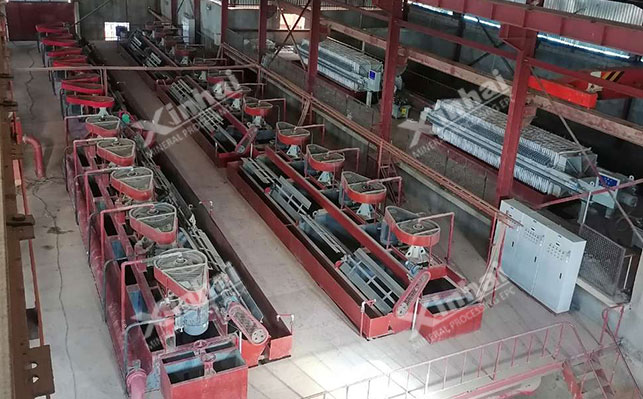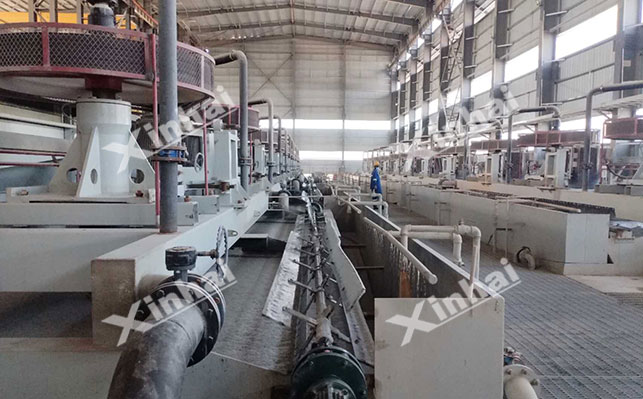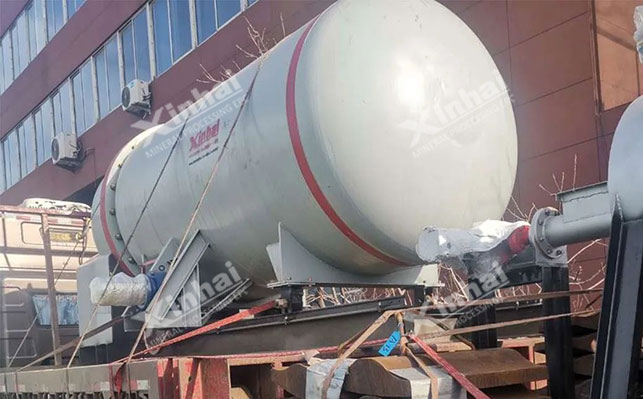
15311826613
Click to add WeChatAs a key strategic metal in modern industry, cobalt is widely used in new energy batteries, aerospace, cemented carbide and other fields. Global cobalt resources are mainly present in ores in the form of sulfides, oxides, arsenides, etc., among which cobalt sulfide ores and laterite-type cobalt oxide ores dominate. The key to extracting cobalt from ores lies in the properties of cobalt ores. Through the coordination of multiple links such as physical sorting, chemical leaching, and metallurgical purification, efficient enrichment and separation of cobalt can be achieved. This article will systematically explain the main technologies for cobalt extraction.
Cobalt extraction by flotation is usually suitable for the extraction of cobalt sulfide ores (such as cobaltite and pyrocobaltite), among which flotation is mainly used as a pretreatment operation. The cobalt extraction process is as follows:

Crushing and grinding: After the raw ore is crushed to -2mm, a ball mill or rod mill is used to grind the ore to -0.074mm, accounting for 60%-70%, so that the cobalt minerals are fully dissociated.
Flotation reagent system: Use butyl xanthate, amyl xanthate and other mercapto collectors, or combine with ethyl thiocyanate to enhance the collection capacity. Add sodium carbonate to adjust the pulp pH to 8-10 to inhibit gangue such as pyrite; for arsenic-containing ores, lime or cyanide needs to be added to inhibit arsenopyrite. When the cobalt mineral is oxidized, add copper sulfate to activate the surface.
Flotation process: The typical process is "one roughing, two sweeping and three fines". The roughing foam is refined several times to obtain cobalt concentrate, and the tailings enter the sweeping operation.
The cobalt concentrate obtained by flotation needs to be further extracted by pyrometallurgy or hydrometallurgy:

Pyrometallurgy
Roasting desulfurization: The concentrate is roasted at 600-800℃ to convert sulfides into oxides and remove sulfur and arsenic at the same time.
Reduction smelting: Roasted sand is mixed with coke, and reduced smelting is performed in an electric furnace to obtain cobalt matte, and then impurities such as iron and copper are separated by blowing.
Hydrometallurgy
Acid leaching: Cobalt concentrate is leached with sulfuric acid or hydrochloric acid, the temperature is controlled at 80-95℃, the acidity is 15-25g/L, and the cobalt leaching rate can reach more than 95%.
Solution purification: Neutralization precipitation, sulfide precipitation or solvent extraction is used to remove impurities such as iron, copper, and nickel to obtain pure cobalt chloride or cobalt sulfate solution.
Electrolytic cobalt extraction: The purified solution is electrolytically deposited, and metallic cobalt is precipitated at the cathode with a purity of up to 99.8%.
Cobalt oxide ore extraction technology is mainly suitable for processing laterite cobalt oxide ore (such as cobaltite, hydrocobaltite). Common extraction methods include: acid leaching,

Acid leaching at normal pressure: After the ore is crushed, it is leached with sulfuric acid at 80-95℃, and metals such as cobalt and nickel are dissolved into the solution. By controlling the pH value, impurities such as iron and aluminum are precipitated step by step, and then cobalt and nickel are separated by extraction.
High-pressure acid leaching: Under high temperature (240-260℃) and high pressure (4-5MPa), sulfuric acid is used to quickly leach cobalt and nickel. This process is suitable for laterite ores with high magnesium content, and the cobalt leaching rate can reach 98%, but the equipment investment and energy consumption are high.
Reduction roasting: The ore is mixed with a reducing agent (such as coal powder) and roasted at 700-900℃ to reduce the high-valent iron oxide to magnetite, and the cobalt is reduced to a metallic state.
Magnetic separation: After the roasted sand is ground, weak magnetic separation is used to recover the magnetite, and the cobalt is enriched in the magnetic product, and then the cobalt is extracted by acid leaching.
This process is suitable for cobalt oxide ores with high iron content, and the cobalt recovery rate can reach 75%-85%.
Use microorganisms such as ferrothiobacillus to oxidize and decompose sulfides or oxides at room temperature and pressure to dissolve cobalt. This technology has the advantages of low cost and environmental friendliness, and is particularly suitable for low-grade cobalt sulfide ores. The bioleaching test of a low-grade cobalt sulfide ore showed that the cobalt leaching rate could reach 82% within 60 days.
For complex ores such as copper-cobalt ore and nickel-cobalt ore, a combined process is required to achieve comprehensive recovery of polymetallic ores:
First, copper-cobalt sulfides are separated by flotation to obtain a copper-cobalt mixed concentrate. After the mixed concentrate is roasted and desulfurized, cobalt is leached out with acid, and the leaching liquid is separated by extraction to obtain metallic copper and cobalt by electrolysis.
This process is suitable for complex cobalt ores with uneven particle size distribution, which can improve resource utilization. Among them, coarse-grained ore is enriched by gravity separation (jigging, shaking table), and fine-grained ore is recovered by magnetic separation. Cobalt sulfide is recovered from the magnetic tailings by flotation, and finally the full-grained recovery of cobalt is achieved.
Different types of cobalt ores, as well as different production scales and product requirements, will result in differences in specific process selection and parameter control, but overall they are all optimized and adjusted around the above-mentioned main steps to achieve efficient extraction and recovery of cobalt.